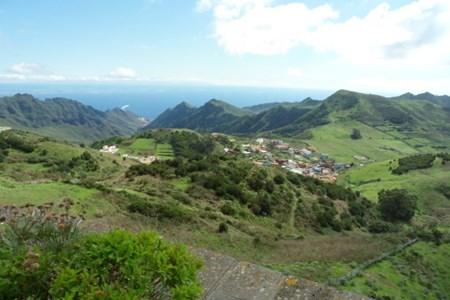PORTUGUÉS
GASTRONOMIA LUSÓFONA
CURRENT AFFAIRS
EU REFERENDUM CRASH COURSE

WINNER
OF
FOOD & DRINK
WHAT DOES THE WORLD EAT FOR BREAKFAST?
TRAVEL

48 HOURS IN MONTREAL
OUTSTANDING OUTREACH 2015

DEUTSCH







































DEUTSCHLAND 83: WIESO IST SIE SO GUT?

March 2016
Issue 16
FEATURED ARTICLE
EDITOR’S NOTE
































































































今日は!
Thank you for picking up a copy of our internationally inspired magazine.
THE BEST OF RUSSIA’S TREATS
PAGE 12
OUR TEAM
I am proud to introduce the sixteenth, and penultimate of this year, issue of The Linguist! As chock-ablock as always, this issue is bursting with fresh articles for you, our readers, written by our teamoffreelanceauthors.
Whether you are interested in foreign news, authentic international cooking, or looking for tips about your upcoming year abroad; our magazine has it all! With an extra page of the Culture section this issue, there are even more articles than usual for you to sink your teethinto.
Don’t miss fantastic English articles inthisedition likeConnor Haines’s ‘BrusselsorBrexit? EU Referendum Crash Course’, or ‘Tenerife: Just A TouristTrap?’ bySarahDaniels.
For those of you who can read foreign languages, don’t overlook Ana Almeida’s Portuguese article which compares traditional dishes from all of the Lusophone countries, and make sure you check out the German section’s insightful review of the popular TV show Deutschland 83 by Emphraim Haywood.
by Dominique Phipp
Our special report this edition, The Insider’s Guide to the Year Abroad, has been submitted by our very own Modern Languages Department. We hope theircanvaspagewillbehelpful to you on your travel adventures.

Our society has been very busy as of late preparing for the upcoming Guild Awards. I am especially pleased that we have received recognition for our hard work, and been nominated for Best Society and Outstanding Community Impact awards!
We produce five issues a year for our readership of language learners, international students, and anyone who is interested in foreign culture. Reading our publication can help you practice your languages and introduce you to countries and lifestyles that you haven’t had thechancetoexploreyet.
If you are interested in writing for our magazine, don’t be afraid to contact one of our editors or message our Facebook page. Anyone is welcome to join, even while you are on your year abroad. No matter where youarefrom orwhatyoustudy, we are always excited to receive articles from new writers!
(Front cover: Photograph of waterfalls in Cherrapungi – the wettest place on earth! - in Assam, India. Inside cover: photograph taken from the balcony of the Taj Mahal overlooking her gardens in Agra, India. Both photos have been taken by DominiquePhipp)
PAGE 3: CURRENT AFFAIRS
PAGE 5: CULTURE
PAGE 8: TRAVEL
PAGE 10: LIFE & STYLE
PAGE 11: FOOD & DRINK
PAGE 12: РУССКИЙ
PAGE 13: ESPAÑOL
PAGE 14: ITALIANO
PAGE 14: FRANÇAIS
PAGE 15: PORTUGUÊS
PAGE 16: DEUTSCH


















































PAGE 17: 汉语
PAGE 18: POLSKI
PAGE 19: SPECIAL REPORT
If you would like to know more about our magazine, our writers or have comments to make about our articles then feel free to check out our Facebook and Twitter pages or email us. If you wish to read more articles check out our website. We’re always looking for new writers and contributors, so don’t hesitate to get in touch!

linguist@guild.bham.co.uk


IN THIS ISSUE 3 7 10 THEUOBLINGUIST.CO.UK UoBLinguist_Mag The UoB Linguist Magazine UOBLINGUISTMAGAZINE
CONTACT US 10 14
17
BRUSSELS OR BREXIT? EU REFERENDUM CRASH COURSE
By Connor Haines
Last month, Prime Minister David Cameron announced that, on June 23rd, the people of Britain will be allowed to cast their votes on whether they think we should remain a member of the European Union, or whether we should leave. It’s one of the most important decisions this country will make for decades –and it’s in your hands. No pressure, right?
If you’re unsure, or simply don’t know enough about the EU to make an informed decision, this beginner’s guide should give you an idea of what the referendum is about, and why it’s important.
Let’s start with what the European Union actually is. It’s a political partnership based in Brussels, of which 28 European countries are members, including the UK. Founded in 1957, it has become heavily involved in international politics, with its own law-making processes and its own currency. Free, unrestricted trade across the EU exists, and you don’t need to apply for a Visa to live and work in another member country. The UK joined in 1973.

The EU has changed significantly since Britain joined, and a number of people believe it no longer reflects what we signed up to, so the Conservatives pledged to hold a referendum on our membership if they won the 2015 general election. If you’re British and over the age of 18, you’re eligible to vote. There will be two options: ‘Remain’ or ‘Leave’.



Why would we want to leave?
People who want us to leave the EU argue that it has too much control over us, as a number of its laws take precedence over UK laws, and that we pay far too much in ‘membership fees’ every year, for what they see as little benefit. They also believe that high levels of immigration caused by the free movement principle are a problem, and that withdrawing from the EU would allow us to set a limit on the number of immigrants coming to the UK.
That all sounds fair enough… so what are the benefits of staying then?
Pro-EU campaigners argue that being part of this international partnership gives us a more powerful voice on the world stage, and allows us to tackle issues such as climate change and terrorism as part of a team. They also argue that the membership fee is exaggerated, as the UK gets some of its contribution back, and is a price worth paying for free trade, international co-operation, the ability for people to come to the UK to work and pay tax, and for UK citizens to easily live and work abroad.
Ok, what’s this ‘renegotiation’ that Cameron keeps banging on about?
David Cameron has spent the last few months trying to change our relationship with the EU, to make it more favourable to the UK. In short, the reforms he’s delivered give more power to national parliaments to block EU laws, protect our currency and reduce benefit access to immigrants, which he hopes will reduce migration to the UK. Whilst his critics argue that the changes are minor, he believes they are significant, and that Britain would be better off in the EU, now that he has secured this arrangement.
And that’s pretty much it… still confused?
If you’ve made it this far, well done! There are a lot of issues at stake here, and this is only a whistle-stop tour of the main points. There’s plenty more research you can do, but avoid newspapers – they are very biased on this issue! If you’re still confused, or want to know more, you can read a follow-up article online at www.theuoblinguist.co.uk.
GUILD OF STUDENTS ‘OUTSTANDING OUTREACH 2015’! 3
DONALD TRUMP: HENS RETURN HOME TO THE REPUBLICAN ROOST
By Saul Shimmin

I do not like the term ‘out of the blue’. When you reflect you realise that everything stems from something else. Even a meteor is formed at some point in the darkness, the cosmos does not simply spit it out. Donald Trump is like a meteor. He may seem like a figure hewn from abstract chance, plummeting into reality, but there are clear reasons why he emerged. Whilst he may not win the Republican nomination, or even the Presidential election, another politician of Trump’s ilk may eventually win, and sooner than you may think.
Storm in a tea cup
It is easy to forget about an old cup of tea. It has been easier still to forget the old Tea Party. This political force came to the fore eight years ago, challenging both Obama and the Republican party. Yet in an election cycle epitomised by Trump, Sanders, and suspect hairstyles, the party seems resigned to public perdition. The Tea Party, funded by the billionaire Koch brothers, opposed Obama’s health care reforms. What seemed initially to be a grass-roots level party spread like a blight, sweeping through local and congressional elections. The Republican party courted the organisation, but despite bending to the Tea Party’s will, the Republican establishment ended up in a protracted struggle with the movement, especially in Congress. The Republican leadership may appear to be wresting control back from the Tea Party, but in a way, the Tea party has already won. Look at the disposition of the presidential candidates on the Republican side this year. Many of their proposals, if they are successful, include dismantling ‘planned parenthood’ as forwarded by Ted Cruz. Further aims amongst these are a tough immigration stance, and ensuring gun rights are perennial. All are stances held by the Tea Party. The Republican party’s flirtation with populism has changed things.
Beyond the Palin


A few weeks ago in Iowa, Sarah Palin, one of the darlings of the Tea Party, bestowed her favour upon Donald Trump. A lot of commentators criticise Trump, and I suppose it is not wrong. Yet in reality, he is an opportunist. A synonym for that is a businessman, and from Trump’s record he is good in this role. One maxim I believe when it comes to power is if you are going to lie, keeping repeating that lie. Lying is like a light switch; the firmer you press, the more likely it will switch on. Once people are convinced, and believe you speak the truth, no proof contrary to your lie will deter them. It is like an infatuation, the people are too emotionally invested to watch it all crumble, and criticism just makes their feelings grow stronger. Trump’s supporters did not emerge from some abyss, they have been mobilised and politicised for more than a decade. When you are told certain opinions by the party you support, in the media that you watch at home, and listen to continually in your car, you begin to adopt those views. People in America have been riled up by politicians for years. Trump says what they want to hear. Who can blame politicians and sundry for espousing those views? It is easier to demonise immigrants and seem to deal with them, than tackle big companies and return industry back home. It is simpler to claim there are conspiracies and fifth columns, than to declare that the short term decisions of men in companies are the reason you are suffering. People do not want to hear that their pain is down to human error, tackling something bigger than themselves is far more intoxicating.
Part of the problem is left-wing politics across the West, because right-wing populism is not an American exception. The most prominent example in my country is whether the U.K should stay in the E.U. The left who advocate our continued membership in the E.U repeat figures about how much we benefit from the Union. Whilst I agree with their arguments, the problem is with their language. Without sounding elitist, most people do not care about figures and investment. The political right regales the public about the costs we endure from economic migrants, asylum seekers and those who come to exploit our NHS system. Sometimes fear is just more appealing than investment.
The media can also deal with populists a lot better. Whilst the news may try to condemn or expose such figures, more often than not it is just free publicity for them. They dismiss their political inconsistencies with a feigned air of honesty. Their supports see such acts as proof that they are different from establishment politicians, who are seen as heartless elitist professionals. (To continue reading the full article online, visit www.theuoblinguist.co.uk)

4 THEUOBLINGUIST.CO.UK
VALENTINE’S DAY TRADITIONS AROUND THE WORLD By Hope Brotherton


Valentine’s Day, the one day of the year where outward displays of affection are openly accepted by the global population. However, in some countries these traditions are somewhat strange, unusual or otherwise suitably romantic. Italy is undeniably the country of love. In the country where Romeo and Juliet was set, Valentine’s Day traditions are plentiful. Valentines was originally considered a spring festival where the young gathered in gardens and enjoyed poetry readings and music before taking a walk with their loved ones. It was also customary in Turin for betrothed couples to announce their engagement on Valentine’s Day. If you’ve ever watched Letters to Juliet, I’m sure you’ll have a very similar picture painted in your head, of classic stone brick work entwined with greenery whilst couples stroll along cobbled side streets. Another tradition stated that young unmarried girls would wake up before sunrise in order to spot their future husbands. It was said that the first man you saw would be the one you’d marry or would at least look like your future husband. This tradition seems less romantic, and even a tad creepy. However, the Italians have redeemed themselves with today’s tradition of the exchanging of gifts and romantic dinners. A typical gift to receive is baci perugina which are small chocolate covered hazelnuts. This year many lovers flocked to the Verona in Love festival for a truly romantic weekend. Looks like I’ll have to start planning a trip to next year’s event!
A country much closer to home that has slightly different Valentine’s Day traditions is Wales. St. Dwynwen’s Day is celebrated on the 25th of January and is the country’s equivalent to Valentine’s Day. The legend states that in the 5th century Dwynwen, the daughter of the king Brychan Brycheiniog, fell in love with a young man named Maelon. However, like all good romance stories tragedy befell the couple and they were for some reason unable to be together. Different stories supply different reasons for this. Some say that Dwynwen was raped by Maelon, others that her father disapproved of her betrothal to him. However, whatever the reason, Dwynwen was distraught and fled to the woods. It was in these woods where she encountered an angel who gave her a love potion for Maelon. Maelon, however, unfortunately turned into a block of ice. A grief-stricken Dwynwen then prayed and was granted three wishes by God. Firstly, Dwynwen wished for Maelon’s release. Secondly, that God would watch over all the true lovers and help them realise their dreams and wishes. And, finally that she herself would never get married. Dwynwen instead retreated to a life in solitude as a nun on the island of Llanddwyn (think A Midsummer Night’s Dream meets the Sound of Music with a dash of Frozen).
It is also customary in Wales to give love spoons as a gift. This is a tradition which dates back to the 17th century. Traditionally, Welsh men would carve decorated wooden spoons and would give them to the lady they were interested in courting as a gift. The designs on the spoons were symbolic; a horseshoe symbolised good luck, a key symbolised the man’s heart, a wheel is symbolic of hard work and beads represented the preferred number of offspring. Here we have two very different countries with very different Valentine’s traditions, so whatever it is you give to your loved one next year, try a Valentine’s Day with a twist like the Italians or the Welsh do.



GUILD OF STUDENTS ‘OUTSTANDING OUTREACH 2015’! 5
FRENCH FILM MAKES LIGHT OF RACIAL PREJUDICES
By Lucy Harkins
‘What have we done to deserve this?’) is a French comedy released in 2014, which puts a comic twist on the hot topic of racism and interracial marriage in 21st century France. This comes in the form of two French Catholic parents struggling to accept their three sons-in-law, who are of different religious and racial origins; here, the vast array of clichés and stereotypes mixing around the dinner table emphasises contemporary racial tensions. The plot becomes even more comical when Laure, the final daughter to be engaged, introduces her fiancé Charles, a French African, which in turn causes hostility between the fathers of the betrothed couple.
The film is hugely relevant to modern French society, considering the mix of different races and cultures in larger French cities, such as Paris or Marseille. For example, it was claimed in 2011 that Muslims made up an estimated 11% of the French population whilst in 2005, North Africans made up 5.8%. Thus, in such a multicultural context, the main appeal of this film is the way in which serious and difficult racial questions are confronted in a truly light-hearted manner; it does not mock such topics, but instead mocks any form of narrow-mindedness which is still found amongst the more conservative older generation. For instance, at one family gathering in particular, the Jewish son-in-law offers the Catholic parents the circumcised foreskin of their grandson in a trinket box, which makes them amusingly uncomfortable. Only after a small fishing incident and a shared stint in a police cell for the African and Catholic fathers do the two eventually bond, and accept the marriage of Laure and Charles, thus uniting the two families and offering us a much needed breath of fresh air…







A REFLECTION ON CHINESE NEW YEAR
 By Chelsea Zhang
By Chelsea Zhang
It is Chinese New Year again, and this year one of the most popular Chinese ads is Rubber Boy, which shows the story of a poor boy who is upset that his mum doesn’t have the money to buy him toys and new presents. However, he realises that he has something more important than people with money will ever have; the presence of caring family members. A similar video uses the symbolic significance of chopsticks to illustrate the point that regardless of province and dialect, age or gender, Chinese New Year symbolises the importance of friendliness and openness, and celebrates a year of hard work. It is rather nostalgic seeing millions of young people complete the long trek back to their home provinces in China to celebrate this grand tradition. While young people look forward to the red envelopes filled with the promise of presents, the elderly look forward to seeing their loved ones again, especially the young ones.
There is a saying in China: When you leave, you may never come back. Therefore, Chinese New Year is deeply symbolic of the importance of family. Regardless of where you live and whatever your chosen career path in life, your family will always be there for you. What does it mean to be Chinese? It means to care about the people who have always cared for you, and have sacrificed their own ambitions for you.
Sometimes, when you sit around the dinner table, the atmosphere becomes incredibly nostalgic, and you conjure up memories of happy times. However, as the years pass some things, such as the presence of family, will never change. That is one of the greatest elements of Chinese culture; undeniably ingrained within one’s soul.
6 THEUOBLINGUIST.CO.UK
REVIEW:OMISSION
By Sarah Daniels & Mary McGowan
is Article 19’s adaptation of Henrik Ibsen’s 1879 play A Doll’s House; performed at the Guild from the 3rd to the 5th March and set in contemporary suburban London. Written and directed by Mia Jacobs and Faye Lawlor, and starring Emma Phelan as Nora, the performance was an intimate portrayal of the struggles facing a working mother in modern society. The fifty minute piece was an engaging mixture of drama, dance and movement, made even more captivating by the use of traverse staging and the small dance studio environment. The cast, who were seated amongst the audience when not taking part in the action, were used to reflect the excessive demands expected of Nora both verbally and through dance. Ben Farrar’s emotive soundtrack also helped to express the building tension in Nora’s life, leading up to her dramatic exit at the end of the performance.
The original Norwegian drama was Ibsen’s naturalist representation of the issues surrounding female agency in nineteenth -century Norway. Nora’s scandalous abandonment of her family and responsibilities shocked audiences around the world, and raised the issue of women’s rights to such an extent in Norway that it became one of the first countries to introduce universal suffrage in 1913.
Whereas Ibsen’s Nora is a dependent housewife, who struggles to pay debts without her husband’s consent, Article 19’s Nora is caught in conflicting demands from her work and increasing family problems. Nora’s wild dance of ‘the Tarantella’ in the original play becomes a mode of expression in Omission, reflecting the tension in her life through Jessica Barber’s choreography. This mindful adaptation of a Norwegian drama cleverly readjusts the demands upon Nora to reflect a contemporary perspective, whilst maintaining the shock of her final departure.








BUSES: BETTER WITH BOOKS!
 By Kia Marie Hunt
By Kia Marie Hunt
Florianópolis is a stunningly beautiful island just off the southeast coast of Brazil. With 42 beaches and plenty of other attractions, there is certainly a lot for me to be getting on with while I spend my semester abroad here.
But, so far, it has proven very difficult to explore at all due to this islands worst feature: its terrible public transport system. Each bus journey costs 3.5 Brazilian Reais, which is roughly equivalent to 50p (plus half price for concessions, including students). It’s awfully cheap so I shouldn't really be complaining. The only problem is that you really do get what you pay for: buses are unreliable, their routes are ridiculously complicated, and local people seem to be in the habit of telling you the wrong bus number- so, after hours of travelling, you end up in the middle of nowhere and have to spend hours going back! However, these buses do have one redeeming quality that I love: their book exchange reading incentive. Most bus terminals on the island have a Projeto Floripa Letrada stand where passengers can leave their old books or magazines, and other passengers can choose one at their leisure to read during their arduous journey. According to the Prefeitura de Florianópolis website around 185,000 people pass through the cities bus terminals each day, and there are approximately 200,000 works available to read as part of this project, which first began in 2010. Returning the books or exchanging them for another one is recommended, but not compulsory as passengers are advised that they are also welcome to take books home with them for free, which means that the stands aren't absolutely brimming with things to read, but there's usually still a good little choice. I've been putting lengthy travelling times to good use by brushing up on my Portuguese grammar with a great textbook I discovered in the central terminal!
Although I'll never be complaining about the public transport in England ever again (I've now realised I was really taking it for granted), I would love to see our train stations follow in Brazil's footsteps in terms of implementing this fantastic book exchange idea.

7 GUILD OF STUDENTS ‘OUTSTANDING OUTREACH 2015’!
(Photo Credit: Article 19 for the production ‘Omission’)
48 HOURS IN MONTREAL
 By Katherine Hawkins
By Katherine Hawkins
During my year abroad I have taken advantage of the many holidays that US universities offer their students, and have tried to travel to various places in North America. During ‘fall break’, my exchange pals and I decided to explore one of Canada’s favourite cities: Montréal. Nestled in the Quebec region, Montréal is considered to be Canada’s cultural capital due to its diverse, urban population and bilingual capabilities. It is the second largest French speaking city outside France, so my pre-GCSE French skills were in for a challenge.
Our first day in Montréal was spent exploring the archaic cobbled streets and appreciating the stunning architecture. The mixture of French and Canadian cultures gave the city a unique twist, and it oozed sophistication and vibrancy. We spent the day visiting many of the major sights, such as the Notre-Dame Basilica, the historic Olympic Park and the Montréal Biodome. Later on, we wandered down the renowned St. Lawrence River, where we encountered lively markets. After exploring the city all day, we settled down in the evening with the local cuisine of ‘poutine’, which is essentially a chips and gravy dish topped with cheese.
The following day we made our way along one of the walking trails to Mount Royale, the highest point in the city, and also the place to which Montréal owes its name. We timed our visit perfectly in accord with the gorgeous autumn weather, and so were treated to scenes of rich, vivid colours. Standing 234 metres high, we were faced with wonderful views of the entire city.
As my trip came to an end, I was disappointed to leave such an eclectic and exciting city behind. Montréal offered the perfect balance of culture, history and scenery, and I would thoroughly recommend anyone to visit.
BETWEEN TWO WORLDS: BERLIN AND TOKYO By Chelsea Zhang







Germany and Japan have always been two of my favorite countries. Despite being located on opposite ends of the world, they both offer tourists unrivalled traveling experience. An attraction not to be missed in Central Berlin is the Holocaust Memorial, situated between Brandenburg gate and Postdamer Platz. To create a solemn atmosphere, architect Peter Eisenman opted for a minimalistic design for each of the concrete blocks in the Memorial. As you walk through it, you are confronted with the two worlds of the modern and the past. You feel the weight of your body collapsing into the immense structures of the Memorial, and you are overcome with a feeling that is almost metaphysical. We cannot change the past, but we can change the future and remember the lessons taught by war.
Tokyo, lying on the other side of the world, is a highly modernised city compared with Berlin. In spite of this, I was more attracted by the Meiji Shrine that is nestled away from the city life of Tokyo. Tourists and locals can write their hopes on ema, Japanese wooden plaques to hang above the wooden walls. As I was struggling with what to write, I glanced at those that were previously hung by tourists. They were written in various languages, and were filled with outpourings of love from around the world. A warm feeling filled my heart, knowing that a part of me will always remain in the shrine. It felt good to escape the city life, even if only for a while. Tokyo and Berlin are wonderful cities. Wherever I went, I was treated with the same hospitality and exceptional level of customer service. My trip to these two different countries reminded me that people are fundamentally the same: we all desire love and peace.

8 THEUOBLINGUIST.CO.UK
TENERIFE: JUST A TOURIST TRAP? By Sarah Daniels






When my mum asked me if I wanted to go with her on holiday to Tenerife, I thought I knew what to expect. Thousands of tourists basking in the winter sun, on an island whose entire economy was centred on tourism. However, while the Southern coastline of the island was full of English tourists, the rest of the island was interesting and worth exploring. The beaches and tourist hotspots of the south were certainly not all bad either.
We were staying on the Playa de las Americas stretch of coastline, and were surrounded by Brits. This was apparent in the very anglicised variety of bars and restaurants, from Irish Pubs to American Diners, and the sheer amount of English spoken by locals and tourists alike. When I asked a waiter at our hotel for a cheese sandwich in my extremely poor Spanish, he was delighted and surprised that I’d made an effort (even if he did have to correct me). His astonishment certainly spoke volumes about the lack of tourists attempting or needing to speak Spanish; a sad example of the globalisation of Anglophone culture.
Nevertheless, there was much more to Tenerife than the beaches. We went on several excursions to see different parts of the island, which, despite being a rather limited way of exploring, enabled us to see a lot in a short amount of time and learn about the areas from our experienced and multilingual tour guide. The East side of the island was beautiful, and a completely different environment to the south in both appearance and culture. We stopped briefly at Santa Cruz, which was a modern capital with a bustling population, and a port which welcomed cruise ships from all over the world. The coach then travelled to La Laguna, which is known as the ‘cultural capital’ of Tenerife. This town was beautiful and friendly, with long pedestrianised streets lined with pastel coloured houses and inviting little shops. We visited the cathedral and wandered around the streets in the sunshine, listening to the classical Spanish music being played by street performers. The coach then swept us into the mountains, which was an entirely different environment again. The moisture of the clouds clinging to the mountains created a rainforest, which was overflowing with overwhelmingly green varieties of plants. Breathtaking views came at the price of fearful hairpin bends and narrow roads. When we reached the seaside village of Taganana for an authentic Canarian lunch, we all breathed a sigh of relief.
A few days later we went on a different excursion, to visit the Central and North West parts of Tenerife. Firstly, we visited the National Park of Mount Teide, which was a stunningly beautiful, arid landscape, characterised by obscure rock formations and dominated by the volcano itself. We then headed to Icod de Los Vinos, where we saw the bizarre and spectacular ‘El Drago’ tree, which Spanish legend says is the fossilised remains of a dead dragon. Whether or not this is true, the tree is certainly impressive; it is 20 meters in diameter, 17 meters high, and resembles a giant twisted broccoli.
Overall, Tenerife is far more than just a tourist trap. It is a diverse island of beaches, rainforests, beautiful towns, bizarre trees and an enormous volcano. If I could return, I’d want to visit these places at my own pace, exploring the beautiful scenery on foot and with a car. I’d make sure someone else was driving on those terrifying mountain roads though!
GUILD OF STUDENTS ‘OUTSTANDING OUTREACH 2015’! 9
(Photos: From top: La Laguna, Mountains near Taganana, Mount Teide National Park with Teide in background)
MOVE OVER PARIS, THERE’S A NEW KID ON THE BLOCK
 By Isabella St John Cooper
By Isabella St John Cooper


For as long as we can remember, Paris has donned the acclaimed title of ‘Most Romantic City’ as couples pose on the ‘kissing spots’ at the top of the Eiffel tower, lounge on the grass of one of Paris’ many parks and swoon over each other in the dimly-lit restaurants to the sounds of Édith Piaf. There really is no denying the Parisian charm however, as increasing tourism pushes up the prices, queues and stresslevels, maybe it is time for love-struck couples to seek their fairy-tale romance elsewhere.
I have spent the past week discovering what Prague has to offer and here are my top 5 reasons why The City of a Hundred Spires is set to be the new destination topping the Romance charts…

Prague Castle. A real fairy-tale-like castle which can be seen standing high up into the clouds no matter where you are in the city. To feel the magic, it is essential to take a (steep) stroll to the top where you can gaze at the vista of Prague’s cobbled streets and it’s 1000-year-old historic centre.
Charles Bridge. To make a city one of the most romantic, a river is essential so that loved-up couples can kiss on the bridge! Charles Bridge is the best way to appreciate Prague’s river Vltava, as it stretches wide joining the two parts of the city. As you wander across it hand-in-hand, be sure to peel your eyes off one another long enough to appreciate the views, the statues which line each side, the buskers and the artists.
Statue of Karel Hyneck Macha. In verdant Petrin Park stands a statue of this celebrated romantic Czech poet. Rumour has it that if you declare your love in front of him, then it will be eternal. Sounds to me like the perfect spot for a proposal… try to top that one Paris!
John Lennon Wall. As a way of remembering the late-singer who spent a part of his life in Prague, in a hidden corner you can find a wall sprawled with inspirational inscriptions. It is covered by both famous quotes and individuals’ personal messages. What better place is there to inscribe your and your partner’s love for each other? This definitely beats Paris’ love-lock bridge in my opinion; and if Prague is good enough for Lennon, then it is good enough for me.

The Restaurants and Bars. For every turning, there is a new restaurant to try with Prague offering an excellent variety of cuisine from Vietnamese and Sushi to fine-dining Heston Blumenthal style (try the Grand Cru). As for the bars, Prague boasts a selection of underground Jazz clubs where you could sway your partner to the rhythm, or you could try out the candle-lit medieval bars if Game of Thrones is more your thing.
The best aspect of Prague is that all these attractions can be accessed by Segway, a super fun and popular mode of transport which could mean you avoiding the hikes up to the cities viewpoints! I hope my suggestions have tickled your taste buds and shown you why Prague should be considered when you book your next romantic getaway, and if you still are not convinced, then check out the prices in comparison to those of Paris and I might have you sold…
10
THEUOBLINGUIST.CO.UK
WHAT DOES THE WORLD EAT FOR BREAKFAST?
 By Jessie Fok
By Jessie Fok

Having been trying to maintain a healthy diet over the past couple of months, I have noticed how important breakfast is to me. Not only is it delicious, it also prevents cravings for unhealthy food for the rest of the day, and provides me with energy and essential nutrients for me to work and study. To make breakfast even more enjoyable, I try to make changes in what I eat from time to time. As part of this, I have been researching different breakfast foods consumed by countries all over the world.
I believe no one reading this article will be unfamiliar with the standard British full breakfast: Lincolnshire sausage, British back bacon, and a pan-fried egg with runny yolk, with optional extras such as tomatoes, baked beans, mushrooms and black pudding. In America, a full breakfast typically has scrambled eggs, crispy streaky bacon and, most importantly, fluffy pancakes. All served up with a perfect cup of coffee (probably the most heavenly moment in one’s life). Alternatively, Americans will also have breakfast hash, which is a traditional breakfast dish consisting of potato and bacon, and topped with a sunny side up egg. Biscuits and gravy, which is essentially savory scones served with gravy made of sausage meat, is also a popular breakfast food option in America.

CREDIT: https://www.flickr.com/photos/vialbost/
While it is common for the British and American to have savoury food for breakfast, the French and Italian never do the same. Traditional French and Italian breakfast usually consists of baked goods such as croissants, pain au chocolats and fette biscottates, served with a nice cup of coffee. French and Italian breakfasts are served plain; no condiments like butter, jam, or even Nutella are allowed. The reason behind this is that French people and Italians like dipping their breakfast food into their coffee, and you can imagine that savoury breakfast food like bacon probably does not go well with coffee!
China enjoys a great variety of breakfast food. Although lighter foods such as steamed bread roll and fresh soy milk are popular across China, more substantial breakfast food, such as rice porridge, is also popular. Add your favourite toppings into the porridge, like pickled vegetables, deep fried anchovies and Chinese doughnut youtiao, and you will be fuelled up for the rest of the day. Breakfast foods in different regions of China differ slightly. For instance, the famous dimsum originated in the Guangdong Province of China, whereas people from the Sichuan Province may have spicy noodles for breakfast.
Interestingly, people in Japan and Korea do not eat breakfast. Food consumed in the morning in these two countries is like any other meal during the day. An authentic Japanese breakfast often consists of steamed white rice and a piping hot bowl of miso soup, with high-protein foods like fish, tofu and eggs served as side dishes. Similarly, rice and soup are also staples for a traditional Korean breakfast. Koreans seldom have protein for breakfast though, so instead various pickled vegetables like kimchi, beansprouts and spinach are needed.


It is generally agreed that having breakfast allows us to have better focus and enables us to manage our weight more easily. It is needless to explain that having breakfast regularly is crucial for university students like us, as we need long-lasting fuels to help us with our studies. Now that you have heard of so many breakfast options, don’t try to skip breakfast anymore. If you are really in a hurry, grab a croissant and enjoy it on the go!

GUILD OF STUDENTS ‘OUTSTANDING OUTREACH 2015’! 11
THE BEST OF RUSSIA’S TREATS


 By Klaudia Kowalska
By Klaudia Kowalska
While spending a month in St. Petersburg last year, I discovered that despite Russia’s healthy meals, there are plenty of traditional, irresistible Russian desserts that I have never heard of. They can be found in every bakery, and are definitely worth trying! Here are my top 4:
My favourite one, Картошка (Kartoshka) is a buttercream cake truffle which, when translated from Russian, means potato. I first discovered this amazing, yet small dessert few days after my arrival, as it was offered to me by the host family I was staying with.
Сырники (Syrniki) are cottage cheese pancakes; one of the greatest Russian desserts. They are often served with cream, jam or honey. As I have experienced, they are also a very famous breakfast meal and are very tasty and easy to make. Definitely worth trying and making while in Russia!
Птичье молоко (Ptichye Moloko) is one of the best Russian desserts. The taste of the cake can be described as marshmallows glazed in chocolate. It was the first cake to be invented in Soviet times, by a famous confectioner in the world of Russian sweets, Vladimir Guralnik. Translated to English, Птичье молоко means Bird’s Milk. Its name is a reference to a Slavic legend of something so rare that it’s nearly unattainable, in this case, bird’s milk.
Шоколад Алёнка (Shokolad Alenka), apart from being the most widely sold chocolate bar in Russia, is a symbol of happy childhood to many generations, as it has been in production since 1965 by the Soviet regime. Existing to present day, its wrapping presents a little girl wearing a traditional head kerchief, which was apparently created by a painter who was inspired by his little daughter. It is a must have which can also be found in most Russian supermarkets.
Therefore, if you are going to Russia any time soon or planning to go in the future, you should definitely try to find all of these delicacies to try them for yourself, or even discover some new ones!


12 THEUOBLINGUIST.CO.UK
GRANADA: EL FLAMENCO Y EL ENCANTO DE ANDALUCÍA
 por Gideon Rafael
por Gideon Rafael
En primer lugar, pensaba que buscaría el ‘flamenco’ (si, el flamenco- no el flamingo) en el diccionario porque no estoy totalmente de acuerdo con su definición. En mi opinión, el flamenco es más que un baile español, no siempre es improvisado y tampoco es algo que solo hagan los gitanos. Hay una expresión que dice: ‘No se toca flamenco, se vive flamenco’-, porque el flamenco es un estilo de vida. Tiene cuatro elementos: el baile, el cante, las palmas y el toque (la guitarra). Además, puede tener diferentes influencias, especialmente del jazz, aunque no por eso pierde su esencia. Desde que empecé a aprender a tocar la guitarra flamenca tenía un sueño: vivir en Andalucía con la gente local y aprender a tocar como ellos. Supongo que me encanta el flamenco por su pasión, su historia, la música y porque es algo muy único. Por ejemplo, un componente del flamenco se llama ‘Duende’. No tiene una definición clara pero hay una buena cita del poeta Federico García Lorca que da la idea: “Duende sólo puede estar presente cuando se da cuenta de que la muerte es posible”.










El año pasado me tomé un año sabático para tener la oportunidad de cumplir mi sueño. Me inscribí en la Escuela Carmen de las Cuevas, situada en el mágico barrio del Albaicín, en Granada. Mi hogar para un mes era un piso viejo con vistas a Sierra Nevada. Llegué a la puerta con una gran mochila y una guitarra en la mano. Estaba sudando después de un camino muy largo por las empedradas calles bajo el calor del sol español. Compartí el piso con cuatro chicas y tres chicos muy simpáticos, cada uno de un país diferente. No sabía más que una o dos palabras en español y los demás tampoco hablaban muy bien inglés. Como resultado, no tuve más remedio que aprender español rápidamente para poder comunicarme con mis nuevos amigos.
TENÍA UN SUE O: VIVIR EN ANDALUCÍA CON LA GENTE
LOCAL Y APRENDER A TOCAR COMO ELLOS
Tenía clases de español y guitarra cada día durante un mes. Aprendí cómo tocar solo y también de acompañamiento. Siempre recordaré que al final de cada clase, el profesor Jorge decía en mal inglés: ‘not too much wine and women tonight!’. ¡Creo que estaba recordando su propia vida! Nunca tuve un momento aburrido; por el día practicaba duro y por la noche tocaba y bailaba en nuestra terraza. ‘La Reina Mónica’ es un bar de tapas de una familia marroquí donde comíamos muy a menudo. La comida, de hecho, era horrible para mi gusto, pero el tinto de verano, que emborracha maravillosamente, hacía que olvidara el sabor de la comida. ‘Le chien d’alou’ es un pequeño bar con espectáculos de flamenco fabulosos. ¡Si vas a Andalucía, prepárate para la fiesta porque allí comienza a medianoche y termine a las seis de la mañana!


Una noche bailamos swing en un bar. Todo salió bien hasta que comencé a bailar con una mujer mayor que llevaba un vestido rojo. No me dio su mano, así que cogí su manga. Al final le dije que necesitó dame la mano. ¡Me dio mucha vergüenza cuando descubrí que a la mujer le faltaba un brazo…! Decidí nombrar mi nueva guitarra por ella: ‘Valentina’.
Durante los últimos días en Granada me invitaron a una corrida de toros en Sevilla, pero no fui. Esta parte de la cultura me asombra. ¿Un arte? No. ¿Cruel? Absolutamente. En vez de ir allí, fuimos a la playa de Boloña en la provincia de Cádiz, frente a la ciudad marroquí de Tánger. Allí estás libre; con la arena, el sol, el mar y la sangría. Paraíso.
13 GUILD OF STUDENTS ‘OUTSTANDING OUTREACH 2015’!
Crediti fotografici:





IL CARNEVALE ITALIANO di Klaudia Kowalska

Il carnevale italiano risale già ai tempi del Medioevo. Nel corso di tutti questi secoli, il carnevale si è arricchito sempre di più con grandi festeggiamenti e parate in tutta Italia, arrivando ai giorni nostri con sfilate di carri dove ognuno esibisce una scenografia a piacere. Per esempio, ogni singola compagnia artistica presenta personaggi della politica, della cultura o dello spettacolo, esibendo il carro più bello e lasciando la gente a bocca aperta.

I migliori carnevali italiani sono quelli di Acireale, Putignano, Manfredonia, il Carnevale di Viareggio, con un fascino più impressionante degli altri, fino al più grandioso e il più conosciuto - il Carnevale di Venezia. Quest’ultimo è veramente straordinario e offre l’occasione per vedere maschere artigianali veneziane e fantastiche scenografie. Inoltre, ogni anno è dedicato a un tema di fondo, al quale si ispirano anche le feste e gli eventi culturali di contorno.

Una particolarità di questi carnevali è che ogni regione italiana, rappresentata dalle principali città, ha la propria maschera ufficiale, per esempio Milano- “Meneghino”, Torino- “Gianduia”, Bergamo- “Arlecchino”, Venezia- “Pantalone”, fino ad arrivare a Napoli, città rappresentata dal “Pulcinella”.
Questi carnevali attraggono milioni di visitatori ogni anno, sia dall’Italia che dall’estero. Perciò vorrei concludere con un consiglio a tutti i lettori: il prossimo anno, se riuscirete a trovare il tempo per passare una settimana in questi posti indicati, ve la ricorderete per tutta la vita. Non dimenticate che potrete anche deliziarvi con tutti i tipici piatti gastronomici e dolciari di ogni regione italiana caratteristici di questo meraviglioso periodo di carnevale.
UN WEEKEND À LYON Par Katya Browne
Vous venez d’arriver à Lyon, la troisième grande ville de la France (mais la plus magnifique, selon les lyonnais). Qu’allez-vous faire ? Voilà un parcours pour vos 48 heures dans cette belle ville située dans l’est de la France. Vous commencez par monter sur le tram funiculaire, qui a récemment célébré son 150ème anniversaire, sur la colline de la Fourvière avec sa basilique majestueuse qui se repose en haut pour surveiller les résidents de Lyon. Si le temps est bien clair, vous verrez les Alpes au loin qui forment une jolie toile de fond. Si vous avez un goût pour la culture, midi à découvrir un des musées de la ville, par exemple le musée Gadagne, qui raconte en détail toute l’histoire de la ville. Ensuite, c’est l’heure de l’apéro (apéritif), et il est impératif que vous preniez une planche de froMarcellin, spécialité lyonnaise) ou de charcuterie à côté d’un grand verre de Beaujolais, un vin rouge léger et délicieux qui se produit dans la région au nord de Lyon, et auquel les résidents tiennent fortement. Le lendemain, vous allez vous promener dans le soleil au bord d’un des deux rivières, le Rhône et la Saône, et puis découvrir le quartier des Confluences où ils se rejoignent, avec son musée d’histoire naturelle fantastique à l’architecture très impressionnant. Si vous avez faim, rendez-vous dans un bouchon, les restaurants traditionnels dans le Vieux Lyon, et découvrez la vraie gastronomie française. Voilà ce qui fait de Lyon un vrai concurrent touristique à sa grande sœur, Paris. Il n’a pas le même statut sur le plan international, mais il devient de plus en plus fréquenté par des touristes qui cherche un séjour plus tranquille et détendu. La ville attend que vous la découvriez !

www.tuscamarviaggi.it
THEUOBLINGUIST.CO.UK 14
GASTRONOMIA LUSÓFONA Por Ana Almeida


Portugal faz parte da Lusófonia, um grupo de países onde se fala o Português como lingua official ou cooficial. Estes países são; Portugal, Brasil, Angola, Mocambique, Guiné-Bissau, Cabo verde, São Tomé e Príncipe, Timor-leste e Macau. Embora unidos pelo idioma e alguns aspecto culturais, cada um destes países tem a sua própria cultura diferente rica e vibrante, e embora muito parecida em alguns apectos a gastronomia também tem o seu proprio toque nativo em cada região.




Em Portugal por exemplo, exitem três tipos de comida fundamentais. Nao é necessário ser perita da gastronomia portuguesa para saber que em qualquer ocasião o bacalhau (embroa possa ser feito em mais de mil maneiras), as sardinhas (sejam assadas na brasa ou pequeninas fritas) e as feijoadas (sejam trás-montanas ou brancas) são as estrelas de qualquer mesa. E é a feijoada o prato mais comúm que se extende por todos os países lusófonos, mas claro, feita de maneiras muito diferentes.
No Brasil as estrelas são a carnes. A picanha e o Rodizio, feito com imensas carnes e chouriços é extremamente popular, normalmente acompanhado por feijão preto, farófa, arroz e ananás. Outro prato famoso do Brasil é o camarão na moranga, onde a abobora é recheada com camarões, requeijão fundido, alho, tomate e cebola. Outra delícia do Brasil é o açaí na tigela. Esta sobremesa pode ser disfrutada de várias maneiras mas a melhor na minha opinião é completa com banana, granola e leite condensado numa praia num dia de verão.
Em Moçambique o uso do côco na culinária é mais forte do que em Portugal. Isto reflecte-se em alguns dos seus pratos mais conhecidos, por exemplo na macupata, uma especie de arroz de côco e feijão, o Macuane e a Matapa da região sul que é elaborada com côco, amendoím e mariscos.
Já na Angola um dos pratos mais famosos da culinária angolana é o funge, um prato típico da região, semelhante à polenta, feito a base de farinha de mandioca ou milho. Outro prato típico da região é a muamba, que é preparada com galinha, peixe ou carne juntamente com quiabos e óleo de palma, uma especiaria que é sempre utilizada na preparação das comidas angolanas. Outro prato que tambem é muito popular é Kizaka que é feita com as as folhas da mandioca, pasta de amendoim fresca, cebola, alho e as vezes peixes ou carnes fumadas.
Em Guiné-Bissau o caldo de Mancarra, uma especie de caldo de amendoim é outro prato popular e muito tradicional. Aqui também se come Tieboudienne, um guisado de peixe, com arroz e legumes. Outro prato á base de peixe muito famoso e muito apreciado é a moqueca de peixe, feita com peixe, limão, tomate cebola, pimenta e leite de côco.
Em São Tomé e Principe come-se muito o Inhame Frito que serve como acompanhamento de várias comidas e as papas de farinha de mandioca. Aqui também se pode encontrar calulu de peixe, elaborado com batata doce, abobrinha, espinafre, quiabos.
E não podemos esquecer-nos de Macau, que para mim tem uma mistura interessante de comida oriental com a portuguesa. Aqui o arroz chau-chau tipico da China é elaborado com bacalhau e ás vezes até com camarão. O uso do piripiri no balichão é outra influência lusófona. Este prato é feito com camarões, pimentos, piri piri, cravinhos e cominhos.
Em Timor leste pode-se encontrar o Vau-tan, uma especie de rissol de carne picada com rebentos de soja e o Tukir de cabrito, que é outra especialidade desta região. O cabrito é temperado com hortelã, erva doce, açafrão, alho e limão e é servido com arroz branco.
GUILD OF STUDENTS ‘OUTSTANDING OUTREACH 2015’! 15
DEUTSCHLAND 83: WIESO IST SIE SO GUT? Von Ephraim Haywood
Jonas Nay spielt Martin Rauch (Codename: Kolibri), einen Grenzsoldaten in der DDR, der während des Kalten Kriegs verdeckt als Stasi-Spion in der BRD arbeitet, um Informationen über einen möglichen Angriff der USA auf Ostdeutschland zu sammeln und seiner kranken Mutter zu helfen.
Die deutsche Fernsehserie wurde im Januar erstmals auf Channel 4 ausgestrahlt und hat Großbritannien im Sturm erobert. Deutschland 83 ist jetzt die bei den britischen Zuschauern erfolgsreichste, ausländische Fernsehserie bund hat die französische Serie ‚Les Revenants‘ abgelöst. Aber warum ist Deutschland 83 so erfolgreich?

(Zugang von: www.edinburghnews.scotsman.com)








Deutschland 83 stellt stylisch und authentisch Deutschland in Zeiten der Teilung dar. Die Serie schwenkt immer wieder zwischen der DDR und BRD, und zeigt die Unterschiede zwischen beiden Staaten detailreich auf. Zum ersten Mal genießt Protagonist Martin, der in der DDR aufwuchs, den westlichen Kapitalismus der BRD. Für uns ist das eine lustige und nostalgische Erfahrung. Nichtsdestotrotz liegt der Fokus der Serie auf Martins Leben als Agent und die ständige Gefahr, dass seine Tarnung auffliegen könnte, was unweigerlich einen Nuklearkrieg zwischen USA und Sowjets auslösen würde. Es steht also viel auf dem Spiel und die Spannung wird noch weitergesteigert. Wen die packende Handlung nicht süchtig macht, wird auf jeden fall von dem überragenden Soundtrack der Serie überzeugt- Klassiker der 80er Jahre. Die Musik verleiht jeder Folge Authentizität. Zu hören sind neben deutschen Hits wie Nenas „99 Luftballons“ auch nicht-deutsche Klassiker wie „Under Pressure“ von David Bowie oder Queen. Außerdem bietet die Serie jede Menge neue Ohrwürmer; für mich war das „Cruise Missiles“ von Fischer-Z. Die Sprachbarriere und Untertitel halten Deutschland 83 nicht davon ab, eine spannende Handlung zu bieten, komplizierte und dramatische Charakterentwicklungen darzustellen, oder uns die Atmosphäre des geteilten Deutschlands spüren zu lassen. Deutschland 83 ist ein MUSS!
Seit sechzehn Jahren lebe ich nun schon in Reading. Die Stadt ging 1947 einen offizielle Städtepartnerschaft mit Düsseldorf ein. Wieso betone ich „offiziell“? Die Beziehungen zwischen den Städten Reading und Düsseldorf begann bereits Ende 1946, nur 18 Monate nach Beendigung des Zweiten Weltkrieges. Während des Krieges wurde Düsseldorf fast vollständig zerstört und das dort stationierte Royal Berkshire Regiment bat Readings Bürgermeisterin Phoebe Cusden um Hilfen für die Stadt. Aus Reading wurden fortan Lebensmittelpakete geschickt, die von den Bürger*innen der Stadt gespendet worden waren. Die Bürgermeisterin besuchte Düsseldorf und lud sechs Kinder der Stadt zu einem dreimonatigen Aufenthalt in Reading ein. Ein solcher Austausch zwischen Jugendlichen findet mittlerweile jährlich statt.
Heute hat sich Düsseldorf vom Krieg erholt. Sie ist die Hauptstadt des deutschen Bundeslandes von Nordrhein-Westfallen. Weltweit ist Düsseldorf bekannt als ein internationales Zentrum für Handel-und Finanzwirtschaft aber auch für ihre Modeund Handelsmessen.
Doch wie kam es zu Städtepartnerschaften zwischen England und Deutschland? Die Idee existierte bereits vor dem Zweiten Weltkrieg und überlebte diesen. Durch die Städtepartnerschaften sollten nämlich die englische und deutsche Bevölkerung einander nährgebracht werden. Zudem sollte die Initiative Projekte fördern, die beiderseitigen Nutzen hatten. Die Städtepartnerschaften waren Symbol von Frieden und Versöhnung zwischen den Ländern. Heutzutage sind Städtepartnerschaften wichtig in unserer Gesellschaft, weil man darauf stolz sein kann. Zudem erlaubt es jungen Menschen einen Austausch machen zu können. Ich habe meinen ersten Austausch 2010 gemacht und werde auch immer selbstbewusster mit meinem Deutsch, obwohl ich noch nicht flieβend spreche. Hoffentlich werde ich flieβend sprechen können, wenn ich Düsseldorf das nächste Mal besuche.
 STÄDTEPARTNERSCHAFTE Von Michael Richards
STÄDTEPARTNERSCHAFTE Von Michael Richards
16 THEUOBLINGUIST.CO.UK
新年快乐!Hannah Mei Grisley
祝你们猴年吉祥,身体健康!
2016 年2月8号是中国夏历猴年的开始,寓意这年出生的人很聪明,吉祥和俏

皮,就像Tom Hanks、Cara Delevigne 和 Yao Ming (名中国的篮球员) 样
。可是2月8号是星期一,为了让英国人也能庆祝春节,伯明翰人在前一天(星
期天)便开始在市中心的唐人街庆祝这个重要的节日,同時推廣中国文化。
唐人街是一个有许多中式饭店和商店的广场。春节时,这里更有长达15 天的庆祝活动 。在刚过去的星期天,我跟我的中文课 同学坐火车到唐人街参与当天的大型的春节活动,日程从功夫游行到传统跳舞表演等等都有。到了的时候,我很兴奋,因为这 是我开始学习汉语以后的第一个春节。看不同种类的表演很有意思,不但有好看的中国舞,儿童歌咏团的演出也很可爱。舞狮 跟鞭炮更是特别了不起的圧台戏,表演中有不少熟练的绝活。由于我也会武术,当中我最喜欢的节目便是武术表演。我会的武 术跟這種不同,然而看了以后,我也想学习这种。
因为天气非常泠,我们买了很多杯热茶喝,有的同学更买了些鸡尾酒呢!活动完了以后,我们去了中英饭店吃年夜饭。年夜饭 一般包含饺子,鱼和长面条。由于我们不知道那些菜好吃,和菜单有太多选择,我们的中国朋友提议我们点柠檬鸡、烤鸭、和 豆豉炒菜。中英饭店在伯明翰中是数 数二的粤菜餐当天我们都吃得酒足饭饱。我觉得中菜很特别,因为我不是每天也吃到。












而且中菜需用筷子吃饭,幸好我早已习惯了!
我很喜欢春节。跟圣诞节比,春节更热闹。你有庆祝春节吗?你春节过得好吗?
中国农历新年已经过去一周了,我想在此祝所有中华儿女新年快乐,万事大 吉。同时,我也想向所有喜爱中国文化的外国朋友介绍一下中国的新年。中国 新年是中华民族的传统节日,也是一年当中最盛大的节日。整个节日历时三周 左右,它包含着辞旧迎新,吉祥如意等美好的寓意。其中最重要的还是,它能
使千家万户都团聚一起。
下面我想介绍几个最典型的习俗,最早迎来的便是扫房子了,因“尘”与“陈”谐音,意思是把晦气的东西都统统扫出门。这 一习俗寄托的人们辞旧迎新的愿望和祈求。
接下来便到了贴春联,倒贴“福”字,贴窗花的时候。这些习俗描绘了时代的背景,抒发了美好的愿望。它不仅烘托了喜庆的 节日气氛,还将吉祥事物,美好愿望表现得淋漓尽致。
转眼间,便到了除夕夜,也正是全家人围坐一起吃年夜饭,守岁的时刻。这天晚上,天空中绽放着亮丽的烟花,屋外鞭炮齐 鸣,屋内欢声笑语。春晚可是除夕夜的重头戏,全家人围坐桌旁,品尝着美味的饺子,一起观看春晚,共同守岁。
除夕的第二天便迎来了真正的春节,也是农历新年的第一天,这一天,人们都出门去走亲访友,相互拜年,祝长辈长寿安康, 祝晚辈万事如意。同时,晚辈还可以在长辈手中拿到压岁钱。这一天,所有收到祝福的人都洋溢着幸福的表情。
这样的喜悦会持续一周左右,直到元宵节那一天,这一天将会是中国农历新年的最后一天。中国新年是对于所有世界各地中华 儿女十分重要的一个节日,它不仅是联系亲人的一条纽带,更是充满欢乐,祝福的一段美好时光。
THEUOBLINGUIST.CO.UK 17 GUILD OF STUDENTS ‘OUTSTANDING OUTREACH 2015’!
中国新年 董雪松 Darren Dong
CZEGO NAUCZYŁAM SIĘ WANGLII O JEDZENIU
Dzięki mojej kilkuletniej i dość niezdarnej przygodzie z baletem w szkole podstawowej odkryłam jedyny aspekt mojego życia, którego nie zamierzam nigdy planować. Po każdym występie tanecznym rodzice zapraszali mnie oraz mojego brata do przytulnej Wrzeszczańskiej pizzerii i, podczas gdy ja uważnie badałam zatłuszczone menu w poszukiwaniu najsmaczniej brzmiących składników, mój brat od razu zamawiał zwykłą, nudną margheritę. Naturalnie fakt, że ktoś może mieć nieco inne preferencje dotyczące jedzenia niż ja za każdym razem bezgranicznie mnie bulwersował. Od tego czasu przyjęłam bardziej libertariańskie wartości, spróbowałam dziesiątek ekscentrycznych dań i wyjechałam na studia, które prawdopodobnie nauczyły mnie więcej o kulinariach niż o psychologii.
1.Anglicy są mistrzami w nazewnictwie

przez Agnieszka Rze niowiecka








Ropucha w dziurze (na załączonym obrazku). Świnie w kocykach. Bąbel i pisk. Owocowy głupek (wszystkie smakują zdecydowanie lepiej niż brzmią!) Jeśli chodzi o polskie nazewnictwo, przychodzi mi na myśl jedynie dość niepoprawne politycznie ciasto czekoladowo-kokosowe, które nadal można znaleźć w wielu polskich cukierniach.

2.Bogactwo kraju można mierzyć według wielkości działu ze słodyczami
Z pierwszej wyprawy do supermarketu wróciłam zszokowana. Chyba każdy słyszał o amerykańskich wynalazkach takich, jak smażone masło, ale Anglia dzielnie dotrzymuje kroku sąsiadom zza oceanu. Rynek zweryfikował tu następujące smakołyki: słodką pizzę z ciastem brownie i piankami, bardzo popularne chipsy o smaku octu czy syropy owocowe z jęczmieniem – te drugie są najlepszym wynalazkiem od czasu smażonej cukinii.
3.Angielska i polska kuchnia mają z pozoru podobne ‘smaki’
W tradycyjnych daniach polskich i angielskich ze świecą szukać szczególnej ostrości: dominują dania łagodne, z mięsem lub ziemniakami w roli głównej. Oczywiście nie brakuje subtelnych różnic: na Wyspach bardzo ciężko jest znaleźć na przykład twaróg, więc serniki pieczone są zazwyczaj z pomocą serów śmietankowych. Moi angielscy znajomi byli zachwyceni, kiedy w polskiej restauracji podano im prawdziwy, polski sernik (kotlet schabowy także otrzymał porcję pochwał) – ja zaś polubiłam wersję angielską. Jeśli chodzi o warzywa, w Anglii bardzo często podaje się groszek i marchewkę, które w Polsce są serwowane głównie dzieciom lub jako składniki tradycyjnej sałatki warzywnej. Polacy i Anglicy różnią się też, jeśli chodzi okonsumpcję ryb – w Anglii co roku zjada się około 1188000 ton ryb i owoców morza rocznie, podczas gdy Polacy spożywają ich około 460 tysięcy.
4.Angielskie dania stają się coraz bardziej wielokulturowe
Rodzaj curry, balti, został tradycyjnym daniem w Birmingham, mimo, iż wywodzi się z Portugalii oraz południowej Azji. Ponadto każdym mieście można spróbować dań indyjskich, wschodnioazjatyckich, czy specjałów ze Środkowego Wschodu. Powstają też restauracje łączące dania angielskie z obcymi –często można natknąć się na lokal, który serwuje zarówno indyjskie, jak i angielskie dania. Amerykańskie sieci fast food, takie jak Five Guys, również mają się w Anglii dobrze.
5.Wszyscy oglądają the Great British Bake Off
Jeśli chcesz znaleźć z nowo poznaną osobą wspólny temat, najlepszym manewrem jest wspomnienie o Mary Berry albo nowatorskich technikach dekorowania tortu. Podobnie, jak ożywioną dyskusję zawsze wywoła w Polsce wspomnienie Magdy Gessler i jej, cóż, parówek. Bake Off to zdecydowanie jedna z najlepszych opcji, jeśli chodzi o prokrastynację po długim dniu na uczelni i o poznawanie tradycyjnego angielskiego jedzenia.
THEUOBLINGUIST.CO.UK 16
18 THEUOBLINGUIST.CO.UK
GET READY FOR YOUR YEAR ABROAD WITH THEINSIDER’SGUIDETOTHEYEARABROAD!

The Insider’s Guide to the Year Abroad (IGYA) is an interactive Canvas course created by the College of Arts and Law Student Experience Team. It features insider information, tips and advice compiled by CAL students who have returned from a year abroad. The IGYA is a space for students about to embark upon, or returning from a year abroad, to connect, support, prepare and access a host of information and advice gleaned from our students’ own experience of the year abroad process. The Insider’s Guide to the Year Abroad features:
Short videos from final year students giving their top tips and advice
Sections for each country with specific information and advice from our Year Abroad Ambassadors
Interactive forums to discuss topics, share videos and photos and connect with other students





Guidance on preparing for, and returning from, a year abroad
Information about academic and pastoral support available at UoB and regular updates on Year Abroad related news and information
All students in CAL should have received an invitation to the canvas course at https://canvas.bham.ac.uk. If you would like to be added to the resource, or have any questions or feedback, please email us at e.j.finan@bham.ac.uk.
Here’s what our students say about The Insider’s Guide to the Year Abroad;
“I think the real value in the Insider's Guide project is that most of the information comes from us, the students. The Insider's Guide provides an idea of our different experiences which I think will really help students hoping to go abroad.”
Amy Jakar, BA American and Canadian Studies, Year 4
“Going on a year abroad was undoubtedly the highlight of my university career, but also very daunting. The Insider's Guide to the Year Abroad addresses all of these concerns, however small or large, and empowers students with country specific tips to help them hit the ground running.”
Stephanie Young, BSc Economics with German, Year 4












































































































































































 By Katherine Hawkins
By Katherine Hawkins









 By Isabella St John Cooper
By Isabella St John Cooper



 By Jessie Fok
By Jessie Fok





 By Klaudia Kowalska
By Klaudia Kowalska
 por Gideon Rafael
por Gideon Rafael































 STÄDTEPARTNERSCHAFTE Von Michael Richards
STÄDTEPARTNERSCHAFTE Von Michael Richards





















